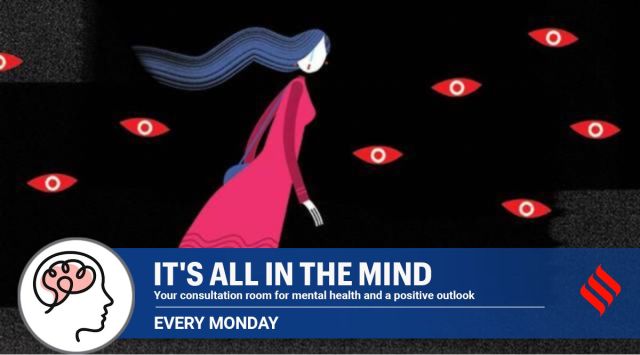Why can’t victims like the murdered Mumbai woman leave their abusive partners?
They stay in the abusive relationship due to fear of retaliation, financial dependence, concern for their children, lack of support from family and friends, stigma and unrealistic hopes that their partner might change, says Dr Satish Kumar CR, Consultant, Clinical Psychology, Manipal Hospital Old Airport Road, Bengaluru.
 Research suggests that most abused women find solutions to maximise their safety and their children.
Research suggests that most abused women find solutions to maximise their safety and their children. The gruesome killing of a Mumbai woman by her live-in/married partner has once again put the spotlight on domestic violence/intimate partner violence (IPV), which is a behavioural pattern to ingrain superiority and dominance in the relationship. It is one of the most common forms of violence against women, which includes physical, verbal and sexual abuse. In fact, every abusive relationship involves an unequal power dynamic, leading the victim to feel helpless. Low mood, anxiety, self-doubt and a reduced sense of self-worth are commonly experienced. That’s why many of the affected do not report abuse; they fear a hitback. Sometimes they fall prey to their abusers who can woo them back with momentary repentance and then resume the aggressor cycle.
The World Health Organisation (WHO) multi-country study on women’s health and domestic violence against women collected data from more than 24,000 women in 10 countries. The results from the study showed that IPV is widespread in all the countries studied. Among women who had ever been in a relationship, 13-61 per cent reported having experienced physical violence by the partner; 4-49 per cent reported having experienced severe physical violence, 6–59 per cent reported sexual violence and 20–75 per cent reported experiencing an emotionally abusive act.
Why don’t victims leave violent partners?
Research suggests that most abused women find solutions to maximise their safety and their children. They stay in the abusive relationship due to the fear of retaliation, lack of alternative means of financial support, concern for their children and their future, lack of support from family and friends, stigma or fear of losing custody of children associated with divorce, and unrealistic hopes that their partner might change. In the WHO multi-country study, 19-51 per cent of women, who had ever been physically abused by their partner, had left home for at least one night, and 8-21 per cent had left two to five times.
Common triggers for domestic violence
Poverty and unemployment: People in dire financial straits cannot reach out for help because they often lack the means to escape the situation and do not have access to legal help or afford their own living arrangements. The abuser keeps the victim in poverty and makes them completely dependent.
Education: Women with less education are more likely to see themselves as weak and inferior to their abusers.
Young parents: Young parents are more likely to lack skills and wisdom in marital life and handle parenting roles. They can be mutually aggressive in conversations leading to domestic violence.
Alcoholism: Excessive substance consumption can play a significant role in domestic violence
Suspicion of Infidelity: Trust, respect and faith are very important pillars in a relationship.When the partner feels that another is cheating on them, they might engage in violence to handle the situation.
Cultural Factors: When people from different cultures are married, there could be differences in the lifestyle and culture. What might be considered inappropriate in one culture could be accepted in another. These differences could lead to conflicts in the family.
Patriarchy: Equality in gender is still a matter of debate. Freedom for women and respective equality is still a matter of debate and is being fought for. The male superiority complex which leads to chauvinism is one of the major causes of domestic violence.
Saving marriage: Some partners use domestic violence as a process to help save a marriage through power play. Such behaviour is accepted and appreciated in some families and communities as well which encourage the partner to practice it.
History of physical abuse in childhood: Most children who underwent physical, verbal or sexual abuse in their childhood do engage in domestic violence with their partner in the adulthood.
Personality or mental disorders: People with antisocial, narcissism and borderline disorders and other mental disorders like psychosis, depression and substance disorders are most likely to engage in domestic violence.
Poor coping mechanisms related to stress: Stress can influence a person to be suicidal as well as homicidal behaviour.
History of domestic violence in family: If parents are engaged in domestic violence, being a witness of such situations means their offspring can engage in the same manner in their adulthood with their partner.
What should victims do?
The first step towards self-control is to identify an abusive pattern that often begins with relatively smaller attempts to harm, control or scare an individual. It is sometimes so insidious that victims involved are not always able to sense a correlation or predictive behaviour.
The abused person should up their guard whenever they realise that the abuser is cornering or marginalising and trying to disconnect them from their family and friends. Whatever happens in life, know that depending on that one person, who is a relative newcomer compared to your family and friends, is neither healthy nor balanced. Everybody needs the cushion of a strong social support system. So reclaim your sense of agency and use your network to talk about your condition and seek help. And definitely do not hesitate to contact a mental health professional.





- 01
- 02
- 03
- 04
- 05


























